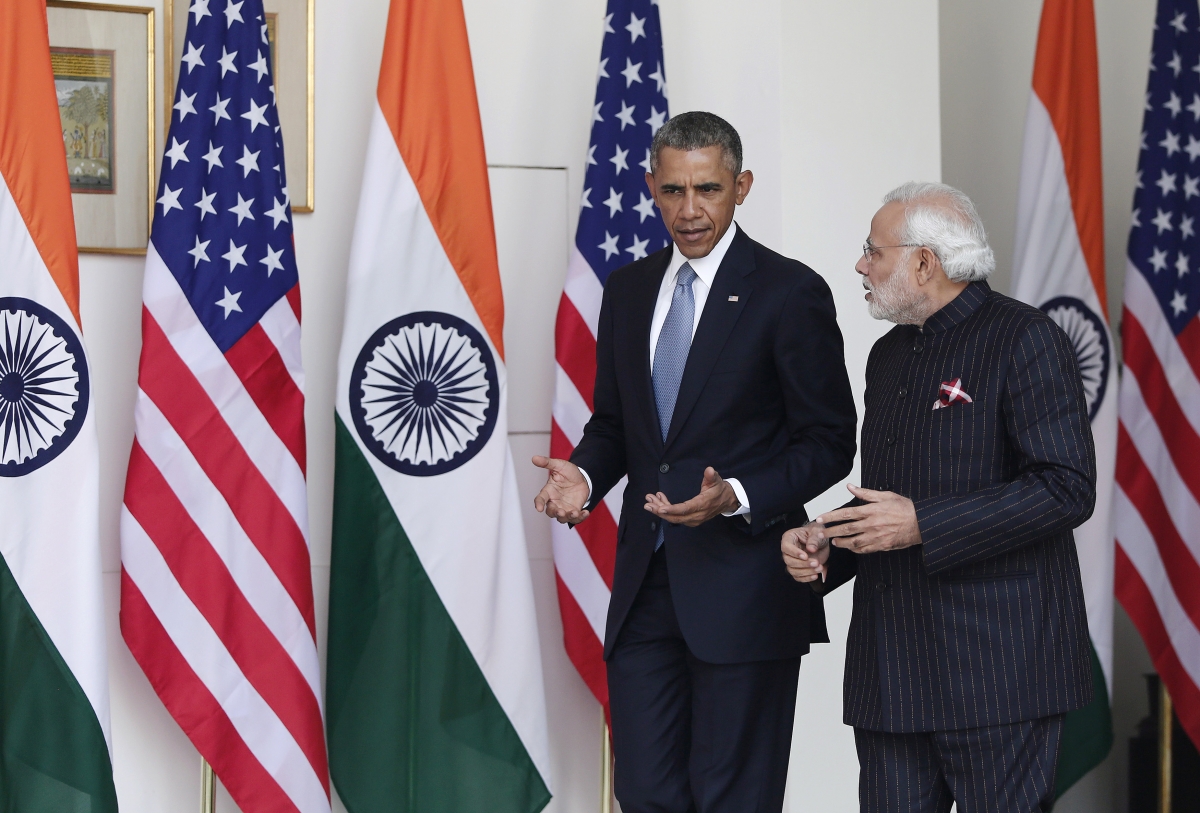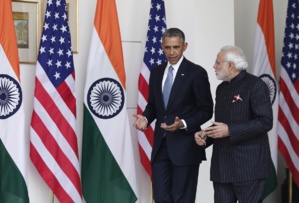With Indian Prime Minister, Narendra Modi, visiting U.S President Barack Obama, the two world leaders drew the world’s attention when they announced a U.S-India agreement on climate change and clean energy.
With this partnership two of the world’s largest carbon spewing nations – U.S and India – have agreed to make significant commitments towards cutting down their respective carbon emission and increasing investment in green energy. In fact, the agreement will help India in more concrete terms by ensuring that the necessary technologies are available to turn its bold renewable energy targets into reality.
Rather than relying one just set of measures, this partnership lists out a comprehensive set of measurable actions, which when taken as a group, goes to represent a significant step towards green energy in India, which at the same time will amount to more and better access to clean energy technologies and dynamic economic growth.
Of significance is the fact that this agreement follows the U.S-China climate agreement, which was signed barely two months back. These three nations, U.S, China and India are the largest carbon emitters in the world.
Although India’s per capita carbon emission are insignificant compared to that of the U.S and China, however, with Mr. Narendra Modi at the helm of its affairs, India is pushing for smarter and cleaner economic growth and development, and thus carrying on the momentum for an International climate change agreement.
India has indeed taken bold commitments towards sustainable growth in the past several months, with its stated goal of setting up a 100 gigawatt solar power capacity and a 60gigawatt capacity for wind energy by 2022. In addition, India is also planning to gradually transform its cities into “smart cities” wherein urban development will be sustainable and will incorporate cleaner, greener technologies.
The multi-pronged approach taken by the U.S-India partnership will go a long way to turn the pledges into something more concrete. With the setting up of the 100GW solar power capacity, the overall energy consumption will gradually reduce the country’s emissions, and immensely help the renewable energy sector to gain more access and expand its overall presence in the country.
Currently almost 300 million of its citizens do not have access to electricity. This translates to almost 25% of its population. Green sustainable energy will not only make the cost of access to electricity cheaper but because of its very nature, it will become more accessible and within reach of the common man.
India’s plan on setting up this 100GW solar power capacity by 2022, is indeed very ambitious. In 2013, the entire world’s solar power capacity was 140GW, thus Mr. Narendra Modi’s plan on reaching 100GW solar power capacity for India alone is indeed setting very high standards. However, if it can reach that target, it will reduce 165million tonnes of carbon dioxide per year. Its equivalence in U.S electricity usage will roughly equate to that of 23 million households.
The announcement by both nations signals commitments towards stimulating further economic growth in private and public investments, which is required so as to meet the stated targets.
13 of the world’s worst air polluting cities happen to be in India. The cost of premature deaths arising out of air pollution is already 6% of its GDP, and with the rising trend of urbanism, air pollution will only increase. If it continues on its present path, it is projected to increase from 380 million to 600 million in the next 15 years.
The joint US-India agreement has also targeted this sector. India plans on collaborating with the AIR Now-International Program from the U.S’s Environmental Protection Agency, in order to reduce the incidents of urban air pollution. Doing so will not only greatly improve the health of its citizens but more importantly for the earth, it will also reduce the emission from greenhouse gasses.
With rising sea levels due to global warming and climate change, India is in a very vulnerable situation with the rising sea levels threatning 8,000 kilometers of its coastline, affecting almost 14 states.
The U.S-India agreement builds on their prior commitments on climate adaptation strategies and provides a platform that outlines means of smarter risk assessment by building resilience and capacity improvement. This will be of immense help to local communities.
It is hoped and expected that the agreement will act as a stepping stone to securing a comprehensive stronger commitments from countries in the upcoming climate agreement, later this year in Paris.
Prime Minister Modi was very clear in the fact rather than being pressured from international events, what counts is “the pressure of what kind of legacy we want to leave for our future generations. Global warming is a pressure… We understand this pressure and we are responding to it.”
With this new agreement, India is taking the path and following an economic model of strategic sustainable development
References:
http://www.ipsnews.net/2015/01/u-s-india-partnership-a-step-forward-for-low-carbon-growth/
With this partnership two of the world’s largest carbon spewing nations – U.S and India – have agreed to make significant commitments towards cutting down their respective carbon emission and increasing investment in green energy. In fact, the agreement will help India in more concrete terms by ensuring that the necessary technologies are available to turn its bold renewable energy targets into reality.
Rather than relying one just set of measures, this partnership lists out a comprehensive set of measurable actions, which when taken as a group, goes to represent a significant step towards green energy in India, which at the same time will amount to more and better access to clean energy technologies and dynamic economic growth.
Of significance is the fact that this agreement follows the U.S-China climate agreement, which was signed barely two months back. These three nations, U.S, China and India are the largest carbon emitters in the world.
Although India’s per capita carbon emission are insignificant compared to that of the U.S and China, however, with Mr. Narendra Modi at the helm of its affairs, India is pushing for smarter and cleaner economic growth and development, and thus carrying on the momentum for an International climate change agreement.
India has indeed taken bold commitments towards sustainable growth in the past several months, with its stated goal of setting up a 100 gigawatt solar power capacity and a 60gigawatt capacity for wind energy by 2022. In addition, India is also planning to gradually transform its cities into “smart cities” wherein urban development will be sustainable and will incorporate cleaner, greener technologies.
The multi-pronged approach taken by the U.S-India partnership will go a long way to turn the pledges into something more concrete. With the setting up of the 100GW solar power capacity, the overall energy consumption will gradually reduce the country’s emissions, and immensely help the renewable energy sector to gain more access and expand its overall presence in the country.
Currently almost 300 million of its citizens do not have access to electricity. This translates to almost 25% of its population. Green sustainable energy will not only make the cost of access to electricity cheaper but because of its very nature, it will become more accessible and within reach of the common man.
India’s plan on setting up this 100GW solar power capacity by 2022, is indeed very ambitious. In 2013, the entire world’s solar power capacity was 140GW, thus Mr. Narendra Modi’s plan on reaching 100GW solar power capacity for India alone is indeed setting very high standards. However, if it can reach that target, it will reduce 165million tonnes of carbon dioxide per year. Its equivalence in U.S electricity usage will roughly equate to that of 23 million households.
The announcement by both nations signals commitments towards stimulating further economic growth in private and public investments, which is required so as to meet the stated targets.
13 of the world’s worst air polluting cities happen to be in India. The cost of premature deaths arising out of air pollution is already 6% of its GDP, and with the rising trend of urbanism, air pollution will only increase. If it continues on its present path, it is projected to increase from 380 million to 600 million in the next 15 years.
The joint US-India agreement has also targeted this sector. India plans on collaborating with the AIR Now-International Program from the U.S’s Environmental Protection Agency, in order to reduce the incidents of urban air pollution. Doing so will not only greatly improve the health of its citizens but more importantly for the earth, it will also reduce the emission from greenhouse gasses.
With rising sea levels due to global warming and climate change, India is in a very vulnerable situation with the rising sea levels threatning 8,000 kilometers of its coastline, affecting almost 14 states.
The U.S-India agreement builds on their prior commitments on climate adaptation strategies and provides a platform that outlines means of smarter risk assessment by building resilience and capacity improvement. This will be of immense help to local communities.
It is hoped and expected that the agreement will act as a stepping stone to securing a comprehensive stronger commitments from countries in the upcoming climate agreement, later this year in Paris.
Prime Minister Modi was very clear in the fact rather than being pressured from international events, what counts is “the pressure of what kind of legacy we want to leave for our future generations. Global warming is a pressure… We understand this pressure and we are responding to it.”
With this new agreement, India is taking the path and following an economic model of strategic sustainable development
References:
http://www.ipsnews.net/2015/01/u-s-india-partnership-a-step-forward-for-low-carbon-growth/






